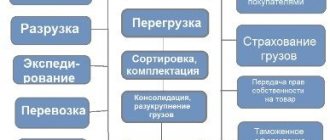Why are KPIs needed?
To contents
In enterprises where KPIs are not used, the performance of both the organization as a whole and each employee in particular is often assessed on an emotional level. And KPI allows you to measure the useful qualities of each “cog” in a quantitative format.
In addition, thanks to efficiency metrics, it is possible to see which actions do not make sense to spend time and money on, and which ones need to be emphasized in order to achieve the designated goals. KPIs are quickly and accurately measurable and are able to cover all activities within the required period of time.
When properly designed and implemented, a system of indicators allows you to analyze the meaning of the results, regardless of whether they are positive or not. To check the operation, the indicators are run through a SMART filter. Each of them is obliged:
- have a specific goal;
- be realistic and relevant to the business;
- measure effectiveness;
- correspond to a specific time interval.
KPIs can be compared to thermometers or barometers. By the “movement of the mercury column” you can determine whether an enterprise or a specific employee is expecting a fruitful summer or a barren winter. But you need to focus on several selected indicators that allow you to see the full picture.
An example of such a “barometer” is the KPI Dashboard CFI course:
As with temperature and pressure, performance indicators are not static. They must change depending on the market situation. If you constantly use only one indicator, there is a risk of pursuing a goal that is already outdated and not relevant.
What is KPI - on video:
Is it necessary to implement KPIs in business?
The KPI assessment system has recently become an integral part of building an effective business. This is especially true for enterprises involved in trade, where a clear system for analyzing the work of each department, accounting for expenses and sales is extremely necessary.
It is worth emphasizing that key performance indicators of an organization are successfully used in large enterprises that have a clear structure of divisions and managers.
Using the calculation of productivity indicators, a manager can objectively evaluate the work of each individual employee in specific numbers, as well as identify the least effective people in his company. Next, motivate them to complete tasks, and if the result is still unsatisfactory, replace them with more productive specialists.
KPI is used not only to evaluate performance, but also to build a motivational system for personnel in the process of business gamification. The essence of KPI, like any other employee motivation system, is to combine the goals of a specific employee with the overall goals of the company. That is, your specialist’s desire to earn more should logically intersect with the desire to fulfill and exceed a specific plan.
Next, we will talk about why an internet marketer needs KPIs and how to compile them correctly.
What does salary mean? KPI salary?
To contents
The KPI system is motivational. It involves increasing employee interest in achieving goals and loyalty to the company. With a fixed salary, specialists lose motivation to work effectively, because there is no point in trying: the output will be the same salary.
With a progressive KPI scale, the employee is entitled to a salary and a bonus based on results if the indicators are higher than the established ones. If it is lower, there will be no bonuses next month, and the salary will be less due to a reduction in the variable part.
Fact! President Vladimir Putin proposes introducing a system of key indicators to track the performance of Russian officials.
This method allows you to orient employees to achieve goals, stimulate their interest in work and evaluate the personal effectiveness of each specialist, including enterprise managers. Additionally, the use of key indicators makes it possible to economically distribute the budget in relation to financial resources and avoid time spent on calculating wages.
Types of KPIs
To contents
All KPI metrics can be divided into two types - lagging and leading. The first are determined by past results over a certain period of time. The second ones are aimed at calculating future results. For example, an increase in the number of applications to purchase a product indicates that sales volume will increase.
Main directions of KPI
KPI indicators are set for all positions, from the head of the enterprise to ordinary employees. They may show:
- effectiveness – quality and quantity of achievements;
- costs - the amount of investment and resources involved;
- functioning – compliance of work processes and business tasks;
- efficiency – proportionality of investments and results;
- Productivity is the relationship between performance indicators and the time spent achieving them.
Indicators can be expressed in a qualitative equivalent, for example, in the form of points, or in a quantitative equivalent - work units, hours or rubles.
Internal and external indicators
Indicators are further divided into internal and external. The former are focused on achieving goals within each department of the organization, the latter summarize the work of the departments in accordance with the general directions of the company.
If we talk about internal indicators, they will be different for each department:
- It is important for sales department employees to track total and potential income, coverage of new and loss of old customers, market share, average transaction size, and promotion of certain products.
- Marketers measure the amount of marketing sales contribution that will lead to total revenue over the long term.
- The customer support department evaluates the average retention time of potential customers and the percentage of calls that lead to a positive result.
- Manufacturers consider process efficiency and quality criteria.
- Personnel officers are interested in such an indicator as staff turnover.
The number of indicators may vary, but traditionally the 10/80/10 rule is used. According to it, the organization develops ten indicators focused on efficiency and effectiveness, and the rest goes towards performance KPIs. It is not recommended to exceed these standards so as not to overload specialists.
How to implement KPI correctly: stages of development
When implementing KPIs in a company, it is necessary to take into account its specifics, goals and objectives, and the flow of business processes. This system will radically change the principle of payroll, so it is important to explain to employees that the effectiveness of their work will directly affect their level of income, and this is useful primarily for them. The staff needs to be trained, because with the introduction of the new system, the corresponding documentation is developed: collective and employment agreements, staffing schedules and all other papers related to remuneration.
There is no need to rush and introduce a KPI system across the entire company at once. To begin with, it is better to test it in one or two branches in order to work out the new payment system and other related processes.
Such a pilot project will make it possible to make the necessary adjustments in real time and avoid further mistakes, because at this stage the shortcomings that need to be eliminated will already be visible, as well as the difficulties that the system causes for the company’s specialists will be identified.
After testing the new system and adjusting it, you can move to the next stage and implement it in other departments, all of whose employees should strive to achieve a common goal. If this principle is not followed, employees will experience difficulties and discomfort, and this will negatively affect their work. As a result, all efforts to implement a KPI system will be in vain.
When KPI is introduced, it will be possible to adapt to the changing market environment and adjust the work strategy. And also every year it is necessary to optimize the bonus procedure.
Because this system is not easy to implement, you should adhere to certain rules and principles that can become indispensable assistants when switching to KPIs:
- The 10/80/10 rule. It states that a company must define 10 key performance indicators, 80 performance indicators and 10 performance indicators. It is not recommended to use many more KPI indicators, because this risks overloading managers with unnecessary unnecessary work, and managers will certainly be preoccupied with finding out the reasons for non-fulfillment of indicators that have little impact on performance in general.
- Alignment of performance indicators and strategic plan. Performance indicators are meaningless unless they are linked to the current critical success factors (CSFs) in the balanced scorecard (BSF) and the enterprise strategy.
- Manageability and controllability. Each division of the company responsible for its indicator must be provided with resources to manage it. The result must be controlled.
- Integrating performance measurement, reporting and performance improvement processes. It is necessary to introduce a process for evaluating performance and reporting that will push employees to take the specific actions required. For this purpose, reporting meetings should be held to consider the issue being resolved.
- Partnership. To successfully increase productivity, it is worth ensuring partnerships between all employees involved. Therefore, the way to implement the new system must be developed together. This will allow everyone to understand what the advantages of innovation are, and also to be convinced of the need for change.
- Shifting efforts to the main directions. To increase productivity, it is necessary to expand the powers of specialists: help in improving their skills, offer to develop their own KPIs, and provide training.
KPI in sales
To contents
Indicators will vary for each specific organization. For a young company, for example, sales volume, reaching new customers and market share are important. For long-established companies, losing old customers and promoting innovative products may be important.
If we talk about the activities of a sales manager, he should take as a guideline such key metrics as:
- sales volume for a specified time period;
- average check and their number;
- traffic of possible buyers;
- return of lost clients.
One of the important points is conversion. If the number of real buyers relative to traffic is small, it means that the sales department is not doing a good job of its responsibilities. It is necessary to find out the reason and correct the activities of the personnel.
Errors when implementing KPIs
The most common mistake is introducing KPIs for statistics alone.
Ultimately, it turns out that the indicators of one division have no connection with the indicators of another.
For example, the supply department of one enterprise needed to reduce costs. Therefore, in order to receive raw materials at a discount, employees purchased them in large volumes, and also purchased defective goods. This led to overcrowding of warehouses, freezing of finances in raw materials, which blocked all the advantages.
Meanwhile, the production department had its own priority indicator - the utilization rate of production equipment. To use time efficiently, employees produced certain products in large quantities to save valuable minutes on machine conversions. But this inevitably affected the fulfillment of the sales plan by the commercial department, because there was no necessary assortment, and at a specific period of time the client could only purchase one type of product.
As a result, a situation has arisen where everyone pulls the blanket on themselves, and no one achieves the goal. The result was reduced to zero, and all the work was done in vain.
Another common mistake is focusing exclusively on material indicators that are the result: sales level, income, etc. However, only when key indicators are not financial, but proactive, can goals be achieved much more effectively.
For example, how many calls should a sales manager make, how many meetings should he hold, how many contracts should he conclude in order to achieve that same resulting KPI? It is on the basis of such non-financial factors that the employee motivation system should be built, and department heads should focus directly on financial ones.
And also a serious mistake would be a situation where the persons responsible for a particular indicator are not identified. For example, the incentive procedure does not imply bonus payments or their reduction by the manager for fulfillment or non-fulfillment of the plan. In this case, the boss cannot be responsible for the actions of his subordinates, because he has no opportunity to influence them.
KPIs in internet marketing
To contents
Digital marketing has its own specifics, affecting short-term and long-term goals, and therefore effective indicators. In addition to universal ones, special indicators are also used here:
- visibility in search engines;
- transitions based on brand queries;
- performance across channels and landing pages;
- click-through rate (CTR);
- cost of visitor and lead;
- the ratio of abandoned carts - failed transactions.
But the most important indicator is the traffic to the Internet resource and changes in traffic. Data can be obtained from Google Analytics, Yandex.Metrica, and other end-to-end analytics systems.
The use of KPIs in website promotion is still an uncommon practice. However, with the right approach to digital marketing, the implementation of a system of key indicators will bring many benefits, making the work on the project as clear and transparent as possible. Examples of well-formulated goals and KPIs are described in detail in a feature article on the online resource livepage.pro.
What is the KPI matrix
There are different interpretations of this concept on the Internet. Sometimes the concept of “KPI matrix - agreement on goals” is used. But the most accurate interpretation is the efficiency matrix.
This table contains examples of employee KPI (key performance indicators), planned and actual values, and the KPI coefficient for each item. The final average value in this matrix reflects the employee’s effectiveness in his activities within the framework of the assigned tasks and indicators defined for his position.
An example of a matrix for the above employees of a company that sells candy, within the parameters defined for them.
KPIs in trade
To contents
In retail trade, both universal indicators and special indicators are used. The first of them include:
- volume of sales;
- product line;
- quality of work with customers;
- ways to minimize damage;
- payroll;
- training.
However, depending on the direction of the store, its owner can find special key points, influencing which to actually increase profitability and increase the share of net profit.
Important! The efficiency indicator in a retail store will increase if a bonus KPI payment system is organized.
Let's say there is a large batch of chandeliers of a certain brand in stock. Each seller is assigned a sales plan for four such lighting fixtures. If someone manages to exceed it, for each additional lamp he receives a percentage of the cost.
As in other areas of activity, each employee has his own KPIs. So, for a seller, this may be the level of monthly sales, the average bill, the number of complaints and regular customers. In order not to burden specialists, there should be no more than eight indicators in retail.
To work effectively with KPIs, you need a suitable CRM system to automate the functioning of the store. We need the ability to download and analyze data at any time.
What is KPI: definition
KPI
(Key Performance Indicator) are the key metrics on which the system for assessing the effectiveness of business processes in a company is based.
It seems that it didn’t work out in simple words. Let's try again.
KPI
(key performance indicators, kipiai) are the most important indicators by which you can evaluate the quality of performance of various business tasks.
These variables may relate not only to assessing the quality of an employee’s work. Let's look at an example of several KPIs that are used to evaluate performance:
- Companies - profit, profitability, capitalization, etc.;
- Employee - for example, for a marketer, KPIs of the conversion rate, or the cost of attracting a subscriber to an account on a social network, can be used;
- Project - for example, to evaluate the effectiveness of an advertising campaign, in the organization of which a whole team is involved. The same key performance indicators can be assigned as in the case of employee performance evaluation.
What are KPIs for?
First of all, a KPI system is developed in order to translate the organization's strategic goals into a clear action plan.
The introduction of a system for assessing key performance indicators allows you to:
- Make all the company’s business processes transparent and predictable;
- Assess the quality of work of each employee, project, company;
- Concentrate the work of all departments on working on priority tasks;
- Create an honest and effective system of motivating staff to achieve excellent results;
- Increase responsibility for the results of everyone involved in the project.
Types of KPIs
The main types of performance indicators are distinguished depending on which metric it is tied to.
For example, there are KPIs for:
- Solved tasks
- by the number of completed tasks. Common in companies using SCRUM in project management; - The ratings received
are based on the quality of work performed, measured in points. Grades can be given by the manager or by clients. For example, if the quality of the support service is assessed; - Quantity
is a standard KPI that evaluates work based on the sum of indicators achieved over the period. For example, for a sales manager, this could be calls made or the amount for which his clients placed orders; - Result
- evaluates how much and what result was produced. This is a symbiosis of assessing quality and quantity; - Costs
- obviously, this item reflects how much resources were spent. Can be applied both in marketing (costs of creating an advertising campaign) and in any other area. The main purpose of entering such a KPI is to minimize costs; - Productivity
is the ratio of the result and the time to achieve it. Simply put, this indicator is also called efficiency - efficiency factor; - Efficiency
- from a business point of view, is the ratio of the results obtained to the costs. A prime example is setting ROMI as the metric by which a company's marketing performance is measured.
Also, simple and complex KPI indicators are distinguished. The easiest way to understand this gradation is with an example.
Example of a simple KPI
— average CTR of advertising campaign ads. Can be used to evaluate the effectiveness of targeted advertising on Instagram.
And complex KPIs
, in this case, there may be an ROI of the advertising campaign. Why is it complicated? Because it includes several indicators at once.
ROI of an advertising campaign is calculated using the formula:
(Profit - Costs)/Costs *100%.
For example, profit (income - cost, in this context) = 10,000 rubles, costs for an advertising campaign - 6,000 rubles. ROI = (10000-6000)/10000*100%=40%.
Now let’s break down the “Profit” indicator into its components:
- CPM - cost of 1000 impressions;
- CTR - % of clicks on advertising campaign ads;
- CR—conversion rate;
- S - average check.
Thus, we get the formula where ROI = (CPM*CTR*CR*S - Costs) / Costs * 100%.
In this case, even if the KPI is set only for ROI, the values of CPM, CTR, CR and even average ticket will also affect it. Accordingly, by working to optimize each of these indicators, you can influence the achievement of KPIs. That is why this KPI is called complex.
Key KPIs
To begin with, let’s look at the main signs of a high-quality KPI.
All indicators that are considered key in the company must be:
- Measurable;
- Defined (clear value or range, period, average value);
- Doable and realistic;
- Limited time frame (KPI indicators - goals, use the SMART method of setting goals);
- Understandable, without ambiguous interpretation;
- Qualitative - have a clear system for assessing the quality of results.
KPIs in personnel management
To contents
In addition to the most important indicator for HR managers - staff turnover, other specific indicators are also used in personnel management. These include:
- number of absences and cost of employee absence;
- satisfaction with working conditions;
- level of staff involvement in the work process;
- career advancement rate;
- number of dismissals initiated by the employer and employee;
- quality of recruitment of new specialists;
- effectiveness of training.
A real business case for creating a KPI template for the HR department is described on the website edwvb.blogspot.com
Key performance indicators and motivation system
To contents
KPI indicators allow you not only to evaluate the work of specialists, departments and the enterprise as a whole, but also to motivate employees to improve efficiency. Moreover, different motivation methods are used. This could also be material incentives, bonuses for those who exceed the standards. This option, for example, is used in the state corporation ROSATOM.
However, fulfillment of KPIs is encouraged not only with bonuses. It could be:
- career advancement;
- providing discounts on goods and services, social benefits;
- the opportunity to take unscheduled leave;
- going on business trips abroad.
When KPIs are introduced, the motivational system becomes clear and transparent. Since planned and effective data are recorded, the director knows what to reward and what to criticize each employee for. And the specialist understands perfectly well whether he can count on a bonus or whether he will face penalties. As a result, not only the company management, but also the entire staff strives for high results.
Additionally, the motivation system helps attract new employees with a high level of qualifications. And through the transparent deprivation of bonuses, the organization will be able to improve the quality of work and reduce salary costs.
Examples of KPI metrics
To contents
There are many types of KPI metrics, but they can all be divided into four main groups. The most commonly used CIPI indicators include the following indicators:
| Sales | Finance | Project management | Marketing |
| Monthly sales growth | Net profit margin | Planned, actual and earned value | Cost of visitor and lead |
| Number of actual and potential clients | Operating Cash Flow | Productivity and cost effectiveness of the project | Conversion and traffic changes |
| Resources spent per client | Payroll factor | Overdue project tasks/tight deadlines | Click through rate (CTR) |
| Average sales per customer over a certain period of time | Accounts receivable and payable | Percentage of projects completed on time and canceled | Number of referrals from social networks and PR campaigns |
| Customer turnover speed | Working capital | Cost of process management | Average time on page |
| Cost of returned goods and guarantees | Costs of settlements with suppliers | Return on Investment | Monthly new leads/prospects |
Of course, each organization selects suitable indicators depending on the specifics of the work and creates new ones - both for setting and achieving goals for the entire company, and for individual groups and specialists.
How a KPI map is created
To contents
A key indicator map is something like a coordinate system. It allows you to understand what place the company occupies in the market and determine strategic and short-term goals. When compiling it, you can clearly see in which direction to move to improve your position. Typically, such a map is drawn up for a year, and the most important, priority goals are included in it.
In such cards, for each department or for the enterprise as a whole, the main key indicators with formulas, algorithms and calculation methods, recommended values, as well as the data of the responsible specialist are indicated.
As an example, here is a KPI map for the HR director:
If you manage to follow the intended route, you can achieve effective fulfillment of all your goals.
KPI: how to calculate
There are specialized CRMs on the market that allow you to track and calculate KPIs almost automatically. However, for small companies or at the beginning of system implementation, their use may be unreasonably expensive and impractical. In such situations, it is most convenient to calculate KPIs in Excel or similar spreadsheet editors available in every office.
Since key indicators directly affect wages, it is logical to calculate them based on the results of the month.
The counting algorithm includes the following steps:
- We determine the weight of each indicator in order of importance. In this case, the most significant indicator is the one whose influence on the final result is greatest.
- We evaluate what indicators each employee has achieved. It is most convenient to put them in a table like this:
- By comparing the planned (target) values of the indicator with the actual results achieved, we calculate the so-called KPI index.
- By summing the indices for each indicator, we obtain the performance coefficient (Kr), on the basis of which the KPI bonus is calculated.
There are 3 options:
- Kr = 1 - the employee fulfilled the plan and receives an additional bonus in full.
- Kp > 1 - the employee has exceeded the plan and a full bonus and a bonus are added to his salary, the amount of which depends on the percentage of the plan being exceeded.
- Kr < 1 - the employee did not fulfill the plan; in this case, the bonus is accrued in a reduced amount or not accrued at all.
What is a goal, fact, base, norm, weight of KPI?
To contents
To calculate KPIs, a special matrix is created where the required data on key markers is entered:
- KPI weight – shows the priority and significance of the indicator for the company. It is expressed in a percentage or numerical range (maximum - one). The greatest importance is always given to the most important indicator.
- The base is the permissible minimum. If an employee does not reach the basic level, this is equivalent to a lack of results.
- Norm is a mandatory planned level. If the number is lower, the employee failed to cope with his duties.
- Fact – real results of activity.
- A goal is an excess value to which one should strive.
All this data allows you to calculate the KPI index, which shows what the employee or even the department deserves - promotion or depreciation.
An example of such a matrix:
The matrix usually includes four or five of the most important performance indicators for ordinary employees and six or seven for management representatives.
What is a KPI index?
To contents
This is the performance ratio. The indicator is calculated quite simply:
KPI index = ((Actual - Base) / (Norm - Base)) x 100 percent.
Let’s say a specialist’s actual sales level for the billing period is 600,000 rubles , the base level is 100,000 and the standard level is 500,000 . The performance coefficient is: (600 – 100)/(500 – 100) × 100 percent = 125 percent. The KPI index is above 100 percent, the standard for this indicator has been exceeded.
There is another calculation formula: KPI Index = KPI Weight x Fact/Target x 100 percent.
The goal and the fact are taken here as a percentage. For example, if we take the only indicator from the scale to one, with the actual level being 30 percent and the target level being 20 percent , then the employee turns out to be a leader in labor, having exceeded the norm by one and a half times.
The calculation of performance depends on all index values. If the coefficient is more than 100 percent, the specialist is doing a good job. If it is less, then the employee works worse than management requires of him.
Types of KPIs
The Key Performance Indicators system does not have any restrictions in the choice of priorities or formulas used. Therefore, different companies may have the same methods for calculating performance, or they may differ dramatically. Most often, owners are interested in the following articles:
- costs - how much resources were spent in monetary terms; functioning - how the consumer reacts to changes in strategy and how this relates to the goals set;
- productivity – the totality of the capacities involved;
- efficiency - a sign by which they determine how a solution works and calculate it based on the ratio of values (for example, the ratio of revenue to expenses);
- results - whether it was possible to achieve the identified objectives.
Depending on what indicators the owner wants to determine, the formula for calculating KPIs will be different.
Do you want to implement Warehouse 15? Get all the necessary information from a specialist.
Thank you!
Thank you, your application has been accepted!
How to calculate salary according to KPI scale?
To contents
The easiest way to do this is to use a performance ratio. Let’s say the fixed part of the salary from a specialist’s planned income of 40,000 rubles is equal to 30 percent, that is, 12,000 rubles . The variable should be 70 percent - 28,000 rubles .
The hardworking employee exceeded the plan by 50 percent. As a result, he will receive not only the fully planned income, but also a bonus of 50 percent of the variable part. His salary increased from 40,000 to 54,000 rubles . If the efficiency coefficient was less than 100 percent, the productive part would correspondingly decrease until it completely disappeared.
There is another way to calculate wages based on KPIs:
- Determine the indicators and their weight for each specialist depending on the goals.
- Organize your metrics calculations.
- Specify the percentage range of compliance with the standard.
- Calculate how all parts of the salary relate - bonus, pregnant and fixed.
An important nuance in measuring an indicator is the relationship between the actual result and the planned one. It is calculated quite simply. For example, the sales plan sets a financial goal of 400,000 rubles per month. In fact, the indicator (KPI) showed 370,000 rubles . To calculate the percentage of compliance with the plan, you need to divide the second number by the first and multiply by one hundred. That turns out to be 92.5 percent.
Next, the calculation is based on the percentage range. Conventionally, it could be like this:
| Completion percentage | Coefficient | Motivation level |
| Less than 50 | 0 | Invalid |
| Up to 90 | 0,5 | Short |
| Up to 100 | 1 | Achieving the goal |
| Up to 120 | 1,5 | Leadership |
| Over 120 | 2 | Essential motivation |
Setting the coefficients largely depends on the goals and capabilities of the company, as well as the specifics of the market.
To illustrate the calculation of salaries depending on the KPI of an employee, you can use a conditional diagram, where the fixed part will be 40 percent of the planned income, and the variable part will be 60. The object will be a salesperson with an average salary of 20,000 rubles . Key metrics have been established for it, such as the percentage of completion of the work plan and sales - KPI1 and KPI2. The weight of each of them will be equal to 0.5, so that as a whole the desired unit is obtained.
The fixed part of the salary - 8,000 rubles - remains with him, but the variable part (initially 12,000 rubles ) can either increase significantly or disappear completely.
Options for calculating a salesperson’s salary depending on KPIs:
| № | Criteria for the implementation of plans | KPI value | Calculation of the variable part | Monthly payment |
| 1 | About 100 percent | 1 | Planned amount of the variable part x (KPI1 weight x KPI1 coefficient + KPI2 weight x KPI2 coefficient) = 12,000 (0.5x1+0.5x1) = 12,000 rubles | 20,000 rubles |
| 2 | More than 100 percent | 1,5 | 12000 (0.5x1.5+0.5x1.5) = 18,000 rubles | 26,000 rubles |
| 3 | More than 50 but less than 90 percent | 0,5 | 12000 (0.5x0.5+0.5x0.5) = 6,000 rubles | 12,000 rubles |
| 4 | Less than 50 percent | 0 | 12000 (0.5x0+0.5x0) = 0 rubles | 8,000 rubles |
These calculations are exaggerated, since there may be more indicators, and their weight may also vary. Additionally, some companies introduce a bonus part. But in general, it is clear that if plans are fulfilled less than 50 percent, the seller will receive only a fixed part of the salary. And if it is overfulfilled, the variable becomes noticeably higher - bonuses appear. The important thing is that their size is clearly calculable, and does not depend on the location of the authorities or other emotional factors.
About the KPI-based remuneration system - in the video:
How to calculate KPI
Point 1. To calculate KPI, you need to select from three to five performance indicators that will be the specialist’s evaluation criteria. For example, for an Internet marketer they could be as follows:
- The number of site visitors attracted by a specialist.
- A figure that shows how many purchases were made by customers who had previously contacted the company.
- The number of commendable recommendations and customer responses on social networks or on the organization’s website after purchasing a product or service.
Point 2. Next you need to determine the weight of each indicator. The total weight should be equal to 1, and the largest one always belongs to the most important indicator, so the picture is as follows:
- new customers - 0.5;
- customers who made a repeat order - 0.25;
- positive recommendations - 0.25.
Point 3. Now you need to analyze the data on all selected indicators for the last six months and draw up a plan:
| KPI | Initial value (monthly averages) | Planned value |
| Growth of new customers | 160 | Increase by 20%, or 192 new customers |
| Share of customers who made a repeat purchase | 30 | Increase by 20%, or 36 repeat purchases |
| Percentage of customers who wrote a positive response or recommendation | 35 | Increase by 20%, or 42 reviews |
Point 4. The next stage is the calculation of KPI indicators in Excel. It is necessary to use the formula for calculating KPI: KPI index = KPI weight*Fact/Goal.
| Key indicators (KPI weight) | Target | Fact | KPI Index |
| KPI 1 (0.5) | 20% | 22% | 0,550 |
| KPI 2 (0.25) | 20% | 17% | 0,212 |
| KPI 3 (0.25) | 20% | 30% | 0,375 |
| Success rate | 1,137 | ||
| 113,70% | |||
Here, the goal is the indicator that the employee must achieve according to the plan, and the fact is what he has achieved in reality. The final figure is 113.70%, this is a good result, however, if you look at the table in more detail, you can see that the marketer did not fully fulfill the planned standards.
Point 5. Calculate wages. We will base it on the fact that the marketer’s total earnings are $800, of which the fixed part (salary) is $560, and the variable part (bonus) is $240. For a 100% index, the employee is entitled to a salary and a full bonus, but due to the fact that the plan is exceeded, the marketer will receive additional bonuses in the amount of 13.7% of the bonus, that is, $32.88. As a result, the employee’s salary will be $560+$240+$32.88=$832.88.
But when an employee does not fulfill the plan, and his performance indicator is below 99%, the bonus amount is proportionally reduced.
With the help of such calculations and drawing up a table, you can see the problems and difficulties that an Internet marketer faces.
Low performance may be due to the fact that the plan was drawn up incorrectly or the loyalty strategy itself is incorrect. The problem area needs to be monitored, and if things do not improve over time, then the right way out of the situation is to change the performance indicators.
Thanks to this approach, an understanding of the operating principle of KPIs is formed. Based on goals, the calculation can be supplemented with new values. This could be a system of fines, the number of solved and unsolved problems, and much more. For example, if less than 70% of the work according to plan is completed, the employee will not receive a bonus at all.
There is also an alternative way to calculate wages relative to the percentage of plan completion:
| KPI Index | Premium coefficient |
| Below 70% | 0 |
| 70 — 80% | 0,6 |
| 80 — 89% | 0,7 |
| 90 — 95% | 0,8 |
| 96 — 98% | 0,9 |
| 99 — 101% | 1 |
| 102 — 105% | 1,3 |
| 106 — 109% | 1,4 |
| More than 110% | 1,5 |
Implementation of the KPI system
To contents
The system is formed from top to bottom. First, the strategic goals of the organization are developed, then matrices are created for employees. But you cannot make it so that only managers choose key indicators. It is necessary to take into account the opinion and experience of leading experts.
KPI principles
When preparing for implementation, four basic KPI principles must be taken into account:
- Partnership. To successfully increase productivity, it is necessary to establish partnerships between employees. By co-developing strategic opportunities, it is easier to achieve understanding of the need for change.
- Focus on core areas. As productivity increases, it will be necessary to expand the powers of the company's specialists. Employees will need to be trained, sent to training and advanced training courses.
- Integration of processes for assessing indicators, reporting documentation and improving performance indicators. The combination of all these points should push employees to take concrete action and take responsibility. For this purpose, reporting meetings are held when controversial issues arise.
- Coordination of performance indicators with strategy. Such KPIs are meaningless unless they are tied to the enterprise's strategic goals and critical success factors, compiled into a balanced scorecard.
You can read more about the principles of KPIs in David Parmenter’s book “Key Performance Indicators”. Also, to study the issue in depth, you can read the books “Dashboards as a Management Tool” by Wayne W. Eckerson and “KPIs and Personnel Motivation” by Alexey Klochkov.
Phased introduction of the system into operation
First of all, it is necessary to determine the main indicators. It's not as simple as it seems. In order for the indicators to clearly correspond to business goals, it is necessary to draw up a list of questions and answer them in consultation with leading experts:
| Question | Possible answer |
| What is your desired outcome? | Increased sales revenue by 20 percent this year. |
| Why does it matter? | This will increase the profitability of the business. |
| How can you influence the result? | Replenish the staff of the sales department, send lucrative offers to regular customers. |
| How do you know if there is progress? | Estimate the increase in income. |
| Who is responsible for the results of the business? | Director of Sales. |
It's worth focusing on developing goals for both the short and long term.
After creating a list of indicators, there are five steps left before implementing the system:
- Create a KPI matrix taking into account the required time indicators.
- Create a motivation program for staff.
- Explain the need for innovation to employees.
- Rebalance your approach to control.
- Calculate KPI standards.
Once completed, it would be a good idea to gather a focus group of several employees and test the new strategy on them.
Time planning is related to the overall strategy of the company. Typically the criteria are month, six months and year. But you can choose any time periods for control. For example, let's say you want to get 1,500 subscribers in the first quarter of the year. But for ease of control, it’s easier to divide the goals equally according to each month: 500 subscriptions in January, 500 in February and 500 in March. Or distribute the desired data unevenly. Perhaps, due to the type of business you have, you can count on more subscribers in some months.
One of the important factors for the success of KPI work is process automation. Many tools have been developed to optimize the technological maintenance of the system so that the implementation goes smoothly and the strategy works effectively. So, for these purposes, various CRM systems and motivation boards are used.
Implementation errors
Many entrepreneurs make common mistakes when implementing KPIs in their company.
This entails a wide variety of negative consequences, ranging from a decrease in labor productivity to the dismissal of employees at their own request.
In order for you to avoid this rake, we will briefly describe in five points what you should not do when implementing this technology. So, let's go. It is forbidden:
- Reduce wages . Even if you have increased the percentage of payments from sales, you cannot cut workers' salaries. The new balanced performance indicator system should provide an opportunity to earn more than now. Otherwise, it will demotivate workers;
- Set inflated indicators. No employee wants to strive for unattainable values, and their current results may also deteriorate. It is necessary to objectively assess the physical and moral capabilities of the worker and set such planned goals, the implementation of which is realistic;
- Implement random KPIs . Calculating key performance metrics that are not suitable for your organization will not only complicate the process of monitoring personnel performance, but will also waste a significant portion of your resources;
- Entrust the task of calculating KPIs to unqualified employees. Incorrect calculations can cause damage to the company and aggravate the situation in the workforce. Therefore, it is much more rational to leave this task to senior managers or analysts;
- Making formulas that are too complex. You cannot introduce formulas that are impossible for the performer to remember. Since in this case, when making calculations, you can easily make a mistake and thereby provoke a conflict situation between the employee and the performer.
That's probably all. Before implementing key performance indicators, I recommend that you go over the main mistakes and make sure that you definitely haven’t made them.
Need marketing consulting?
Contact us to improve marketing in your business
Marketing, sales and personnel
Individually tailored to your business
Experience in your field
Find out more
Pros and cons of the system
To contents
Using KPI indicators has its positive and negative sides.
The advantages of the system are as follows:
- identifying the effectiveness of current activities;
- setting strategic goals with visible results;
- timely identification and elimination of problems;
- transparency and objectivity in assessing the work of the organization and employees;
- correlation of employee performance results with the level of their remuneration;
- correction of business processes at any stage;
- control of incoming cash flow and investments.
The wage fund will become a means of motivating staff, and not the main source of expenses. This will allow the organization to retain valuable personnel.
Disadvantages include implementation costs, maintenance, and the difficulty of explaining to employees the need to change the existing system.
Attention! If employees do not understand the strategy, conflicts of interest and significant bias may arise. And this can lead to negative consequences: from a decrease in labor productivity to the mass dismissal of valuable personnel.
The use of KPIs will be most useful if a businessman is going to scale his business, because in a large enterprise it is extremely difficult to track performance without using key indicators.
Advantages and disadvantages
Initially, KPIs were used to a greater extent in the field of trade. Sales were easy to quantify and analyzed to generate savings.
However, if you approach this tool correctly, it will be equally useful in a variety of areas - from sales to personal growth.
Therefore, today you can find the use of this mechanism in a wide variety of areas and industries.
Accordingly, the question here is not what kind of business it is suitable for, but how to properly configure it specifically for your company. And how to do this correctly, I will tell you further.
Lifehack. If you want to keep your finger on the pulse, I highly recommend the analytics service Comagic.ru. In addition, there are super tricks for generating leads.
The use of the KPI system gives the company a number of significant advantages. Especially if the entrepreneur plans to scale his business.
Since in large volumes it is simply impossible to “visually” track the dynamics of development.
Pros:
- Determining the effectiveness of current activities;
- Formation of plans, strategies and forecasts.
- Timely identification of problems and their elimination;
- Correction of all business processes in general.
Taken together, all the described advantages allow you to control the incoming cash flow and regulate its weight. But there are also negative aspects when implementing KPIs.
Minuses:
- Cost, high cost;
- Excessive standardization;
- Difficulty in proper implementation;
- Formation of a tendency towards individualism among employees.
In addition, key performance indicators can only measure quantitative, not qualitative, performance results.
This means that in pursuit of the necessary numbers, workers may neglect the proper level of service or service standards.
WE ARE ALREADY MORE THAN 32,000 people. TURN ON
In-scale / marketing
Possible problems
To contents
To avoid misunderstandings, lack of desire of staff to make contact and mass dismissals, you need to try to avoid mistakes. For this:
- Don't lower your salary. Employees' salaries should fall sharply. The KPI implementation strategy assumes the possibility of increasing earnings and improving efficiency, rather than cutting wages. Otherwise, no motivation will work.
- Don't set your targets too high. If employees understand that the indicators are unattainable, then the point in improving work will disappear. Assess the abilities of specialists realistically and offer tasks that can actually be solved.
- Don't set KPIs at random. Without a thorough analysis of key metrics, it will become extremely difficult to monitor performance. And spending on implementation and technological support will be in vain.
- Do not trust the calculation of key indicators to those who do not understand it. An unprofessional approach will lead to aggravation of the situation in the team and unnecessary expenses. If there is no qualified specialist, it is better to hire a visiting analyst.
It is important to have a clear internal reporting system, otherwise accurately measuring and presenting indicators will become difficult or even impossible.
Metrics must be measurable, achievable, and formulas must not be overly complex. An individual approach to each employee is important, otherwise other people’s actions can affect the employee’s KPIs, which will lead to conflict.











